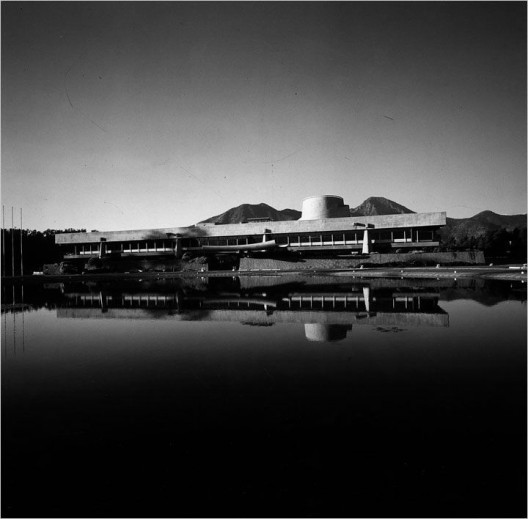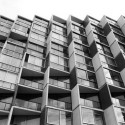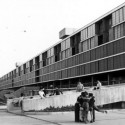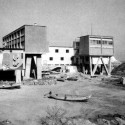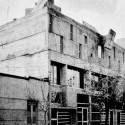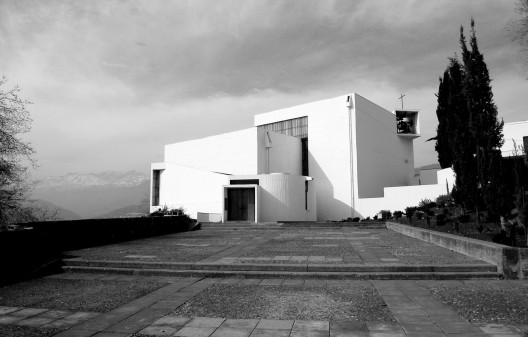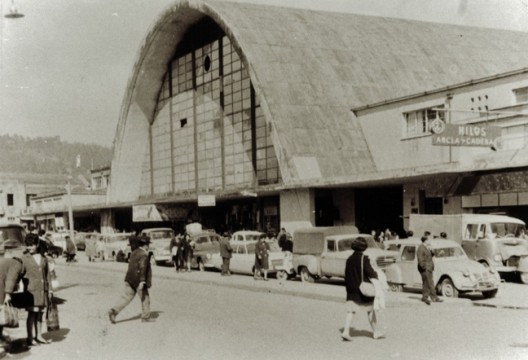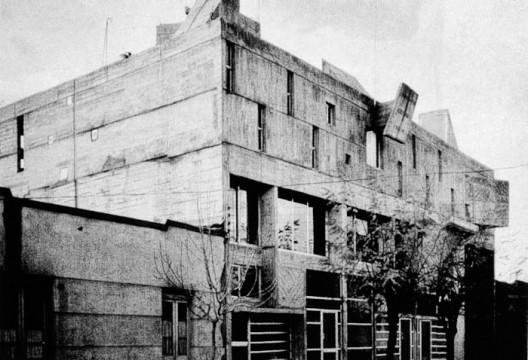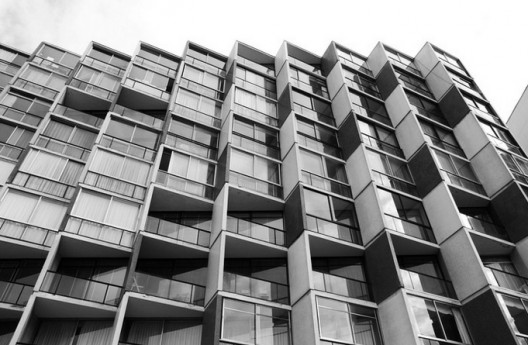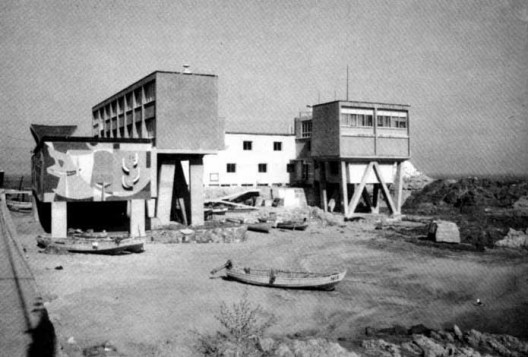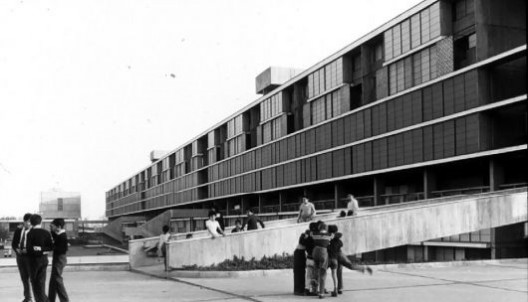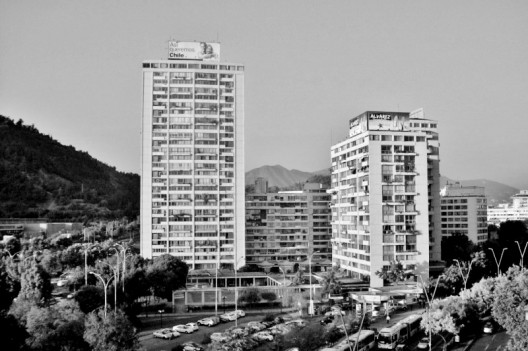Visitas
lunes, 30 de junio de 2014
viernes, 27 de junio de 2014
Una tela estructural que teje carpas de refugio para comunidades - Abeer Seikaly
ABEER SEIKALY [info@abeerseikaly.com]
Quise editarlo, pero no pude. TODO es interesante.
Ahí va completo. Y con las imágenes en tamaño original.


view of the tent structures (day)
Structural Fabric Weaves Tent Shelters into Communities
Human life throughout history has developed in alternating waves of migration and settlement. The movement of people across the earth led to the discovery of new territories as well as the creation of new communities among strangers forming towns, cities, and nations. Navigating this duality between exploration and settlement, movement and stillness is a fundamental essence of what it means to be human. In the aftermath of global wars and natural disasters, the world has witnessed the displacement of millions of people across continents. Refugees seeking shelter from disasters carry from their homes what they can and resettle in unknown lands, often starting with nothing but a tent to call home. “Weaving a home” reexamines the traditional architectural concept of tent shelters by creating a technical, structural fabric that expands to enclose and contracts for mobility while providing the comforts of contemporary life (heat, running water, electricity, storage, etc.)
Design is supposed to give form to a gap in people’s needs. This lightweight, mobile, structural fabric could potentially close the gap between need and desire as people metaphorically weave their lives back together, physically weaving their built environment into a place both new and familiar, transient and rooted, private and connected. In this space, the refugees find a place to pause from their turbulent worlds, a place to weave the tapestry of their new lives. They weave their shelter into home.

view of the tent structures (night)

studies - cut & scored paper turns into a flexible/strechable pattern




study model showing movement of the system & its collapsibility




view of the tent structures opened (spring & summer)

view of the tent structures closed (autumn & winter)


interior view of the tent (open). double layer fabric/skin could be utilized for storage in the lower areas
supporting system (solar energy)
decentralized energy (nomadic)
decentralized energy (nomadic)



Assembly/Disassembly
transportability
transportability

jueves, 26 de junio de 2014
miércoles, 25 de junio de 2014
martes, 24 de junio de 2014
Esa escalera - Oscar Niemeyer
The Palace of Itamaraty, Brasília, Brazil, Oscar Niemeyer :: 1960 - 1970

lunes, 23 de junio de 2014
viernes, 20 de junio de 2014
Si los edificios hablaran - Wim Wenders
La imagen que acompaña a este comentario está sacada de la página web oficial de Wenders y son dibujos del propio director. En esa página también hay unas estupendas fotografías de Donata Wenders y el texto, escrito por Wim, copiado a continuación:
[traducido al español, más abajo]
[traducido al español, más abajo]
Others would speak like the Financial Times,
yet others would praise God, or Allah.
Some would just whisper,
some would loudly sing their own praises,
while others would modestly mumble a few words
and really have nothing to say.
Some are plain dead and don’t speak anymore...Buildings are like people, in fact.
Old and young, male and female,
ugly and beautiful, fat and skinny,
ambitious and lazy, rich and poor,
clinging to the past
or reaching out to the future.Don’t get me wrong: this is not a metaphor.
Buildings DO speak to us!
They have messages. Of course.
Some really WANT a constant dialogue with us.
Some rather listen carefully first.
And you have probably noticed:
Some of them like us a lot, some less
and some not at all.Buildings, like people, are subject to time
and exist in a three-dimensional world.
That’s why our film is in 3D.
It’s an invitation to wander around,
to experience and to listen, for once.The building you will encounter
is a particularly gentle and friendly one,
made for learning, reading and communicating.
Its hills and valleys (yes, they exist in there)
are eager to welcome you,
to help, to be of service,
and to be, in the best sense of the word,
a meeting place.(by Wim Wenders, July 2010)
photography by © Donata Wenders; from left: Wim Wenders, Ryue Nishizawa, Kazuyo Sejima
|
jueves, 19 de junio de 2014
Clásicos chilenos
Varias son las obras clásicas chilenas que han ido conformando la arquitectura de este país, siendo ejemplos hasta ahora de calidad espacial, y plástica, y que representaron las tendencias arquitectónicas más novedosas del momento, influenciadas por los grandes de la arquitectura moderna, como Le Corbusier, o Mies Van der Rohe, adoptando conceptos como la simplicidad, el funcionalismo y la economía.
Sin embargo, estas obras tienen una característica especial, ya que adaptan estos principios a la realidad local, donde se mezclan los conceptos del modernismo con la tradición representada por la arquitectura colonial y vernácula, e incorporando además una estructura que debe soportar los constantes movimientos de tierra presentes en este país.
Los dejamos con una selección de los mejores clásicos chilenos.
Capilla del Monasterio Benedictino / Gabriel Guarda, Martín Correa
Mercado Central de Concepción / Tibor Weiner & Ricardo Muller
Edificio Copelec / Juan Borchers, Jesús Bermejo & Isidro Suárez
Edificio Copacabana / Larraín+Larraín
Estación de Biología Marina de Montemar / Enrique Gebhard
Unidad Vecinal Portales / B.V.C.H
Edificio de CEPAL / Emilio Duhart
Conjunto Residencial Torres de Tajamar / Luis Prieto Vial & B.V.C.H
Suscribirse a:
Entradas (Atom)

























